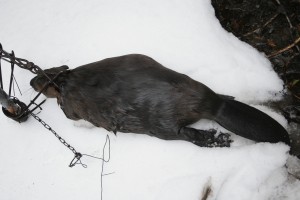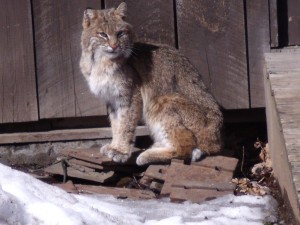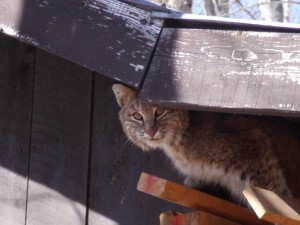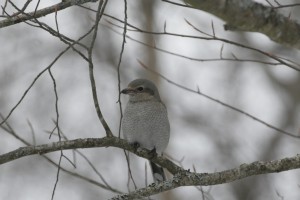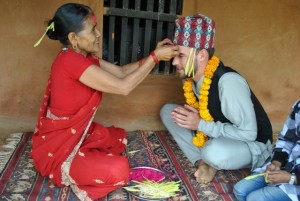
Paul Josephson as his friend’s mom gives him a tika, a red mark on his forehead, for Dashain, a hundu Nepali festival
Town of Webb School graduate Paul Josephson has found his place in the Himalayan mountains of Nepal, having served as Education and Rural Development Coordinator for Saprinu, a nongovernmental organization (NGO), since the fall of 2012. Saprinu, founded in 2010, is dedicated to providing access to affordable quality schools with a mission to educate, equip, and inspire students to value truth, think critically, and live responsibly and fully.
“Investing in quality education is the best investment one can make. Everything else- the rest of one’s life- depends on the quality of education one receives as a child,” Josephson said.
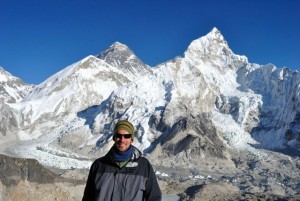
Paul Josephson in the Himalayas
While Saprinu’s main focus is on education transformation, it also works toward women’s empowerment through literacy and skill development, youth empowerment and small business and local NGO development, he added.
Based in Nuwakot District, six hours northwest of Kathmandu, Josephson rents an earth and stone house in the village of Archale, where he works.
He also rents a small house in Kathmandu, where he travels for monthly meetings.
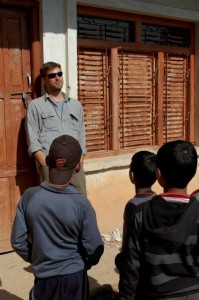
Paul talks with Nepalese boys at the school in Archale
Saprinu takes a grassroots approach to education, he said, treating villagers as equals.
Once relationships are established, staff members implement “appreciative inquiry” and listen to what villagers want and help facilitate their dreams into realities.
Saprinu will be working with the government-sponsored school in Archale, providing teacher training and workshops, improving physical infrastructure, introducing extracurricular classes and programs like physical education, music and art, and help- ing to fill the school with resources like books, computers, games, art supplies and science lab equipment.
This year, the staff will work with Seed, a Nepali NGO which specializes in local, environmentally- friendly building techniques such as passive solar heating, green roofs, water collection and composting toilets, to repair school infrastructure.
Local men and women will be trained and employed to repair the school, which serves preschool children from age three to grade 10 coed students. As a national policy, education in Nepal is provided free of charge. Saprinu intends to help Archale residents create a community resource center to house a library, computer lab and meeting place. Continue reading →




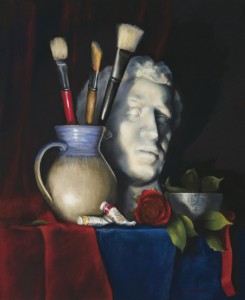 Patricia Tribastone, winner of over twenty-five art awards, will teach ‘painting with pastels’ at View on Sunday, May 5.
Patricia Tribastone, winner of over twenty-five art awards, will teach ‘painting with pastels’ at View on Sunday, May 5.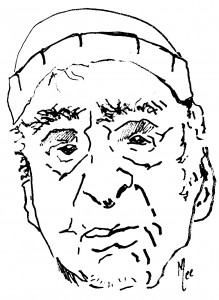 When I was growing up, I would practice my drawing skills by sketching the faces of the many visitors who stopped by our house before entering into the woods.
When I was growing up, I would practice my drawing skills by sketching the faces of the many visitors who stopped by our house before entering into the woods.